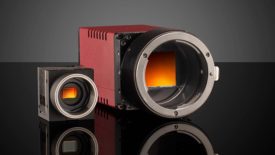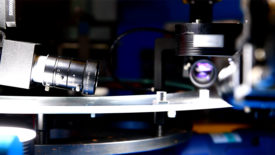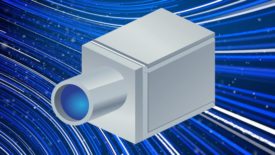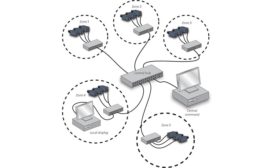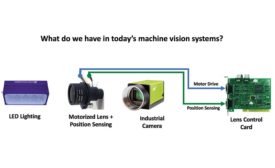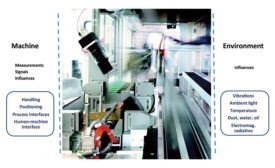Home » Keywords: » camera interface
Items Tagged with 'camera interface'
ARTICLES
Vision & Sensors | Lighting
Learn more about liquid lens technology.
Read More
Vision & Sensors | Sensors
New Sensors and Machine Vision Applications Drive Advances in Optics
New opportunities continually emerge — including in the field of robotics and autonomous machines.
May 22, 2023
Vision & Sensors | Camera Interfaces
CLHS IP Core Enables 25 Gbps Products To Quickly Reach The Market
CLHS uses a proven core that is easy to use, operates at 10g, 25g, and has a roadmap to 50g.
May 18, 2023
Test & Inspection
Quality Automation: The Role Robotics and Sensors Play in Quality Control and Production
Manufacturers looking to improve their production process efficiency and effectiveness should look closely at Quality Automation.
May 8, 2023
Vision & Sensors | Machine Vision 101
Machine Vision Standards: A Review and Update
Over machine vision's long history in industrial automation, the emergence and development of standards has been one of the key drivers in advancing this technology.
January 3, 2023
Vision & Sensors | Machine Vision 101
A Quick Overview Of Industrial Camera Interfaces
Machine vision system developers must consider data bandwidth, cable length, and other factors when choosing a camera interface.
September 1, 2022
Developments in Machine Vision Camera Interfaces
A number of data transfer hardware interfaces have been developed specifically for the machine vision sector over the years, including cameralink, GigE vision, USB3 vision, CoaXpress and Cameralink HS.
November 30, 2020
The Future of Machine Vision Imaging Systems
Beginning with the AIS's camera link standard, the industrial camera portion of the imaging system was standardized.
July 1, 2019
Keeping Up Standards in Machine Vision
The use of industrial vision as part of Industry 4.0 and smart factories has been discussed extensively in recent years, but requires machines to speak the same language.
November 15, 2018
Ethernet Evolution – 10 Gigabit Ethernet
With 10 gigabit ethernet, higher bandwidth is added to the familiarity and reliability of gige vision cameras and twisted pair cabling
September 1, 2017
Stay in the know with Quality’s comprehensive coverage of
the manufacturing and metrology industries.
eNewsletter | Website | eMagazine
JOIN TODAY!Copyright ©2025. All Rights Reserved BNP Media.
Design, CMS, Hosting & Web Development :: ePublishing

